Keep Pace with Changing Requirements in the Beer Industry with Sovos ShipCompliant
Breweries of all sizes are aware of the rapidly changing regulatory requirements for both three-tier and direct-to-consumer (DtC) shipping channels. Expanding product lines, moving distribution into new territories and accounting for all federal and state laws can put extra pressure on the organization. What does it take to maintain compliance without compromising other aspects of your brewery’s business?
Here are real-world examples of how Sovos ShipCompliant can help those in the brewing industry get a handle on compliance.
“Despite the patchwork and difficult landscape of malt beverage compliance, our team at Sovos ShipCompliant has gone above and beyond to ensure a smooth, functional, effective solution for managing filings, registrations, and compliance. We’re grateful for the time savings associated with managing disparate state laws and policies, as well as the peace of mind it offers.”
Use case #1: Brewery Automates Manual Processes & Centralizes Compliance
Colorado-based Left Hand Brewing Co. struggled with scaling issues as it entered into new states, with employees manually completing all paperwork. The tedious and time-consuming process raised the risk of missing deadlines and overwhelmed the staff. Additionally, Left Hand had limited visibility into specific state compliance requirements, pushing employees to guess on numerous issues.
The Sovos ShipCompliant Market Ready solution helped remove guesswork from Left Hand’s compliance efforts, while also automating the manual processes necessitated by mountains of paperwork. Compliance was centralized into a single platform, ensuring accuracy and providing peace of mind. The brewery can now expand into new regions faster than before and ensure that its product is on shelves when expected.
“We’ve grown too much to let guesswork lead us to the next step. [ShipCompliant] helped us in that regard [with] a centralized point where everything lives. It’s as easy as the push of a button to get all of our paperwork done.” -Director of Accounting & Administration at Left Hand Brewing
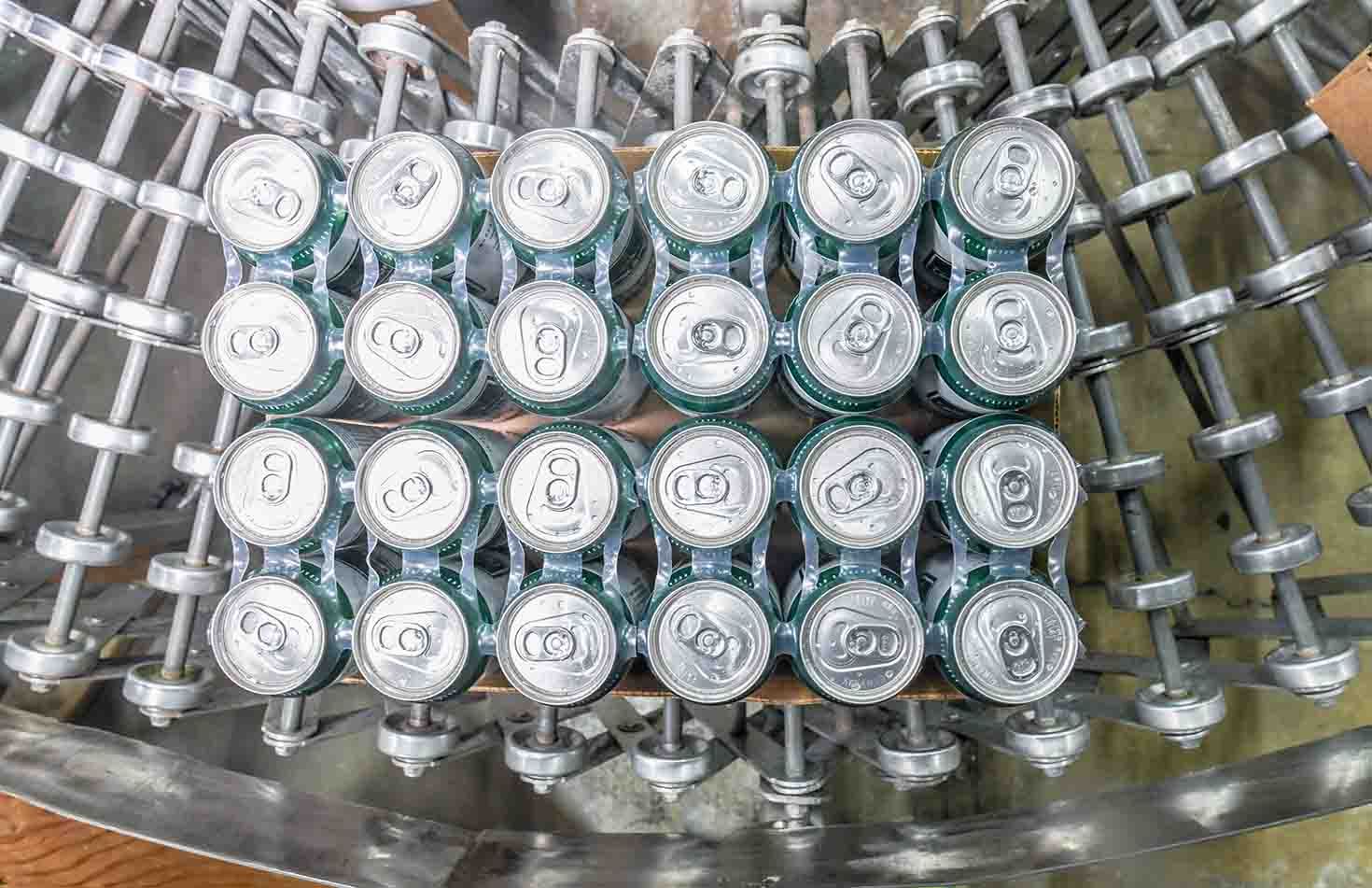
Use case #2: Improved Registration Process Helps Brewery Focus on Biz Development
Uinta Brewing had manual processes in place for maintaining compliance and conducting state product registrations. This inefficiency put extra pressure on employees and prevented them from being able to properly focus on other business priorities.
With Sovos ShipCompliant 3-Tier Reporting and Market Ready solutions, Uinta has one platform where it can get answers on state requirements, register a product and keep track of licenses and documents. This helps the brewery save time and reduce the risk of errors.
Uinta Brewing now has a “one-stop shop for regulatory compliance,” according to its director of regulatory compliance. Employees reduced their time spent on compliance from weeks to days and eliminated the risk of getting stuck on small regulatory issues. The brewery can get products to the market and in the hands of their customers faster.
“It comes down to confidence—knowing that we can go to one place and get answers on state details and state requirements, and then in that same platform be able to actually register a product and keep track of licenses and other documentation. It's the Swiss Army knife of regulatory compliance.”
What Sovos ShipCompliant can do for you
Direct
- Real-time compliance checks against more than 1,000 state rules and regulations
- Rooftop-level, alcohol-specific tax determination
- Streamlined reporting
- Integrations with all major DtC e-commerce, point-of-sale and fulfillment systems
Market Ready
- Streamlined state product and brand label registrations
- Integrated directly with 10+ government systems, including the TTB
- Increased visibility with insight into ETAs for federal and state registration approvals
- A central repository for all brand compliance data, state requirements and forms, and license renewal deadlines
Want to learn more? Contact our team to find out how Sovos ShipCompliant can help.
Maintain Compliance in the Ever-Evolving Wine Market with Sovos ShipCompliant
Introduction
Whether you’re a large-scale winery looking to start a wine club or subscription service, or you’re a small vineyard that needs to improve its approach to wholesale compliance, regulations and requirements can quickly change. How can you maintain compliance without losing sight of other key business initiatives?
Here are real-world examples of how Sovos ShipCompliant can help those in the wine space get a handle on compliance.
Use case #1: Online Wine Club Saves Money on Reporting, License Management
Vegan Wines is a subscription-based club and online wine club that ships to 38 states. The startup did not have the staff to dedicate ample time to track and manage compliance for every order. The team spent large amounts of time processing online and wine club orders through the system, used spreadsheets and manual data entry to check compliance and then individually forwarded the information on to their fulfillment partner.
Sovos ShipCompliant Direct helps manage shipping compliance, taxes and licenses through one solution. Direct assists with streamlining the reporting process, reduces the risk of errors and incorrect reporting, and keeps all licensing information in one place.
Vegan Wines saves about $10,000 per year, or about 10 minutes per order, by using Direct.
“We decided to go with ShipCompliant thanks to the integrations it has with our fulfillment partner, allowing us to automatically pass orders from our website through ShipCompliant, to our warehouse, which then fulfills and ships the orders. We could also receive the tracking information back through ShipCompliant, making the process much easier for all parties and bringing a level of automation we did not have previously.”
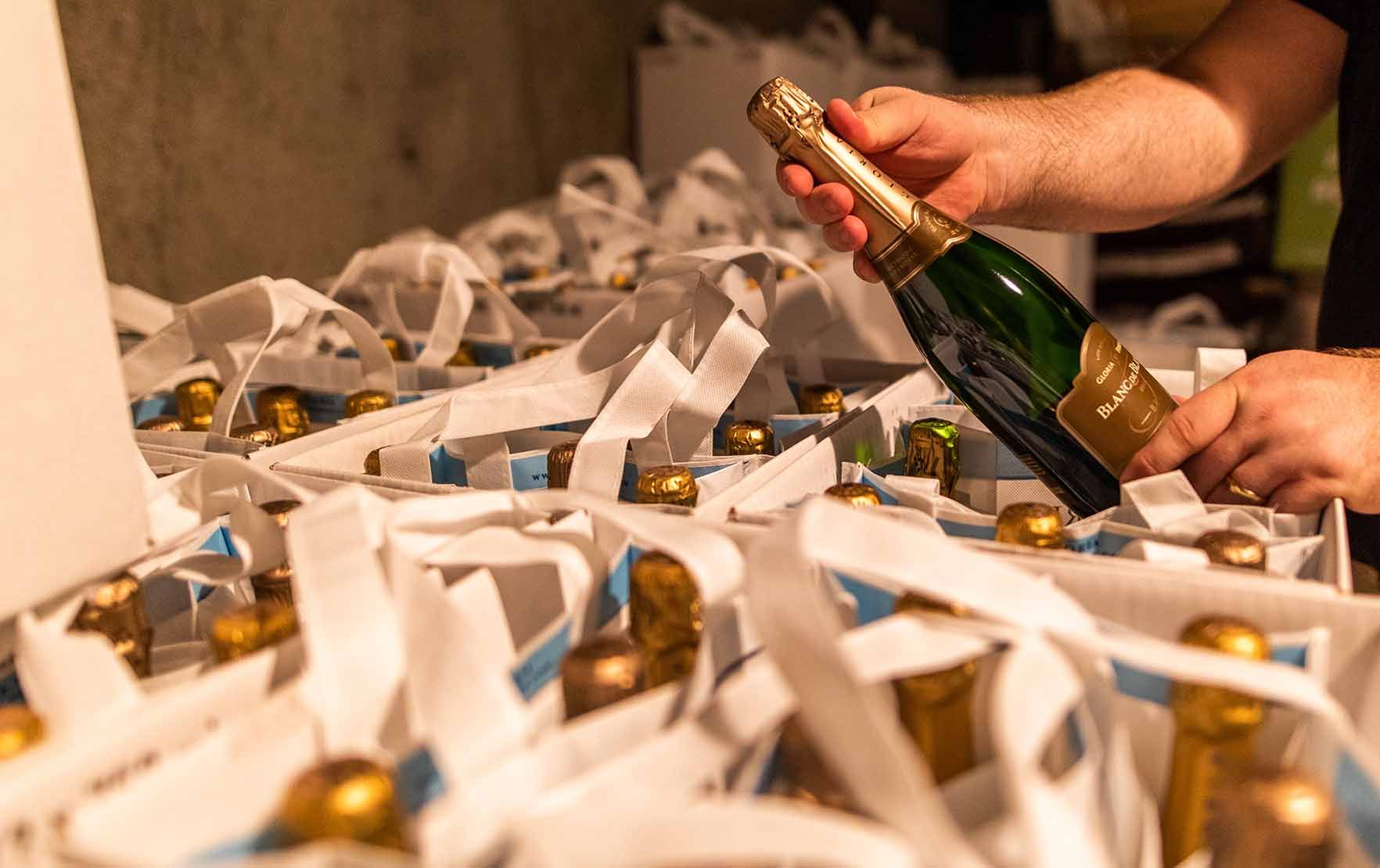
Use case #2: Winery Eliminates Manual Reporting & Improves Customer Experience
Family-owned and operated winery Moshin Vineyards produces approximately 10,000 cases annually with 50/50 direct-to-consumer and three-tier distribution. It was replicating state reporting forms in spreadsheets, manually transferring data from hard copies and then submitting forms at the end of each month. Employees had to know each state’s individual rules, looking up changes as they occurred.
ShipCompliant Direct offers a comprehensive resource for state regulatory information. Moshin receives automatic notifications on state reporting due dates, license expirations and custom customer shipping email notices, ensuring customers get their packages.
Moshin saves over 50 hours a month on checking compliance and knows that its team will be quickly informed of any compliance issues, eliminating shipping problems.
“We absolutely fell in love with the idea of how [ShipCompliant] managed the DtC compliance process. Then we found software that would work with it, not the other way around. We were up and running within a month and humming along just perfectly normal within a quarter. ShipCompliant makes it possible to do our job and we can trust that [their] information is accurate. You just can’t put a price on customer satisfaction and peace of mind.”

Use case #3: Importer & Wholesaler Streamlines Compliance
California-based importer and wholesaler Martine’s Wines needed better structure and efficiency for its compliance processes. A lack of a reliable system made it difficult to know when a state license might need a renewal, when to provide notice for when products were registered to state distributors, or when to inform clients on state license and shipping law requirements—which are often in flux.
The Sovos ShipCompliant 3-Tier Reporting and Market Ready solutions helped Martine’s Wines gain greater visibility into the business with regulatory compliance, license management and automated registrations. The products provided a centralized database, shortened the time to market for new products and better empowered employees to bring the focus back to core business priorities.
“Having these compliance-related resources at my fingertips gives us better peace of mind that our business is following the rules because anything can be looked up in a matter of seconds.”
What Sovos ShipCompliant can do for you
Direct
- Real-time compliance checks against more than 1,000 state rules and regulations
- Rooftop-level, alcohol-specific tax determination
- Streamlined reporting
- Integrations with all major DtC e-commerce, point-of-sale and fulfillment systems
Market Ready
- Streamlined state product and brand label registrations
- Integrated directly with 10+ government systems, including the TTB
- Increased visibility with insight into ETAs for federal and state registration approvals
- A central repository for all brand compliance data, state requirements and forms, and license renewal deadlines
Want to learn more? Contact our team to find out how Sovos ShipCompliant can help.
Three-Tier System Basics: Staying Compliant in an Evolving Industry
Beverage alcohol suppliers that wish to sell their products across state lines must first understand and comply with the regulatory requirements of the three-tier system. This includes a long list of complicated requirements to meet before an alcoholic beverage product can be distributed and sold in any state, plus required follow-up reports that can make compliance time-consuming and expensive.
This complimentary ebook details the three-tier system basics, and how to remain compliant so your business can have success in this channel. Topics discussed in this ebook include:
- Getting Licensed
- Operating in a Control State
- Understanding Self-Distribution Permissions
- The Importance of Product Registration
- Tax Determination and ReportingDistributor
- Relationships
Wineries, breweries, distilleries, cideries, sake brewers and other beverage alcohol companies of all sizes who are distributing beyond their state borders will benefit from this detailed overview of key compliance and regulatory aspects of the three-tier system.
Download your free copy of this valuable resource now!
Get the eBook
Get to Know Our Integrated Partners
Video conversations featuring Sovos ShipCompliant integrated technology partners talking about their products and our integration
One important way Sovos ShipCompliant enables efficiencies for our clients is by being connected to the most commonly-used technology platforms in the beverage alcohol industry. Our expansive network of integrated tech partners — 60+ and growing — allows ShipCompliant customers to enjoy seamless operations via integrations spanning ecommerce, front end and point of sale (POS) systems to ERPs and fulfilment houses, from carriers to even state agencies — all integrated with our robust compliance solutions.
Our integrated partners are industry-leading software and on-premise solutions with which we’ve created direct integrations for real-time, alcohol-specific tax rates, compliance checks, order data and product SKU syncs.This allows different systems to “talk” to each other seamlessly.
Why do integrations matter?
Integrated technology platforms help eliminate time-consuming work, like transferring data from one system to the next, saving aggravation and minimizing the risk of human error. The time saved allows users to focus on other priorities within the business.
Meet the partners
The informal conversations featured in these videos are meant to explain in straightforward terms what each company offers and how their integration with Sovos ShipCompliant solutions works. We hope you find these chats helpful. You can also search for integrated partners by name, product type or integration level (e.g., platinum, certified) on our Integrated Partners page.
Partner Spotlight Video Series
Meet Bloom
Build on top of Shopify’s best-in-class e-commerce platform, Bloom provides everything a growing winery needs to sell online and manage their club memberships.Meet VineSpring
VineSpring enables wineries, breweries and distilleries to manage ecommerce and club customers, orders, products, and inventory from any web-enabled device. VineSpring is a Sovos ShipCompliant Platinum Certified Partner.Meet Sovos ShipCompliant!
This one-minute video provides a quick introduction to our compliance and reporting solutions for wineries, breweries, distilleries, cideries, distributors, importers and other members of the beverage alcohol industry.
Infographic: 4 Essential Traits to Look for in Your Compliance Partner
10 Steps to Expanding Your Brewery
Introduction
Businesses are constantly looking to evolve and expand, and this is no different in the beverage alcohol space. However, this is a more heavily regulated industry than most others, which makes bringing new products to the marketplace a unique challenge for a brewery.
In addition to the standard logistical issues businesses face like market analyses, licensing, and distribution, a brewery also has to cope with a bevy of regulations from the federal government, state governments, and, in some places, even local jurisdictions. Compliance can be tricky for companies in any space, but it is an especially difficult aspect of selling alcoholic products in the U.S. because of the murky regulatory landscape.
But, never fear! Everyone struggles with expanding their footprint, to some extent. These are natural growing pains, and it’s best to embrace them. In that spirit, we’ve put together a guide for beer producers looking to introduce new products to market and widen their distribution networks: 10 Steps to Expanding Your Brewery.
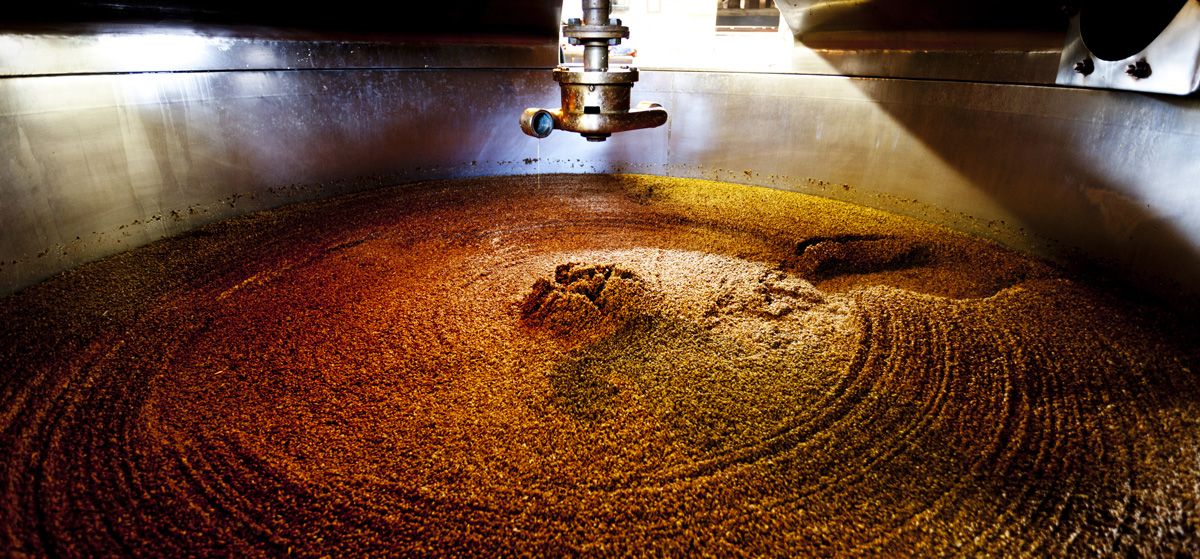
1. Know Your Brewery
Before you launch a new product or expand your presence into new areas, it’s imperative to have a complete understanding of your company’s ability to successfully complete the registration process and meet all compliance requirements in each area.
What does your internal team look like? Is it equipped to handle an influx of new responsibilities and obligations? Are you prepared to meet each state’s requirements for registration? Do you have the financial resources? The key to successfully entering new regions is to have everything in place before entering new markets. Identifying openings in the market is important, but you also have to identify your own capabilities before making moves, and then identify the right time to do so.
2. Know The Market
Speaking of identifying openings in the market – you need to consider the state of the market. Keep an eye on what’s trending right now, and maintain a close watch on newer products that could possibly explode onto the scene. To expand your footprint, your brewery needs to have products that both reflect what’s currently popular and also are different enough from everyone else that you can stand out from the crowd.
Are your products diversified enough from what everyone else is offering in a certain region? What are the top-selling beer types and brands there? How did your beer perform at regional events? A comprehensive grasp of the markets you intend to enter is critical to the success of your expansion campaign, so you should be sure to follow those markets for quite a while before making a commitment to them.
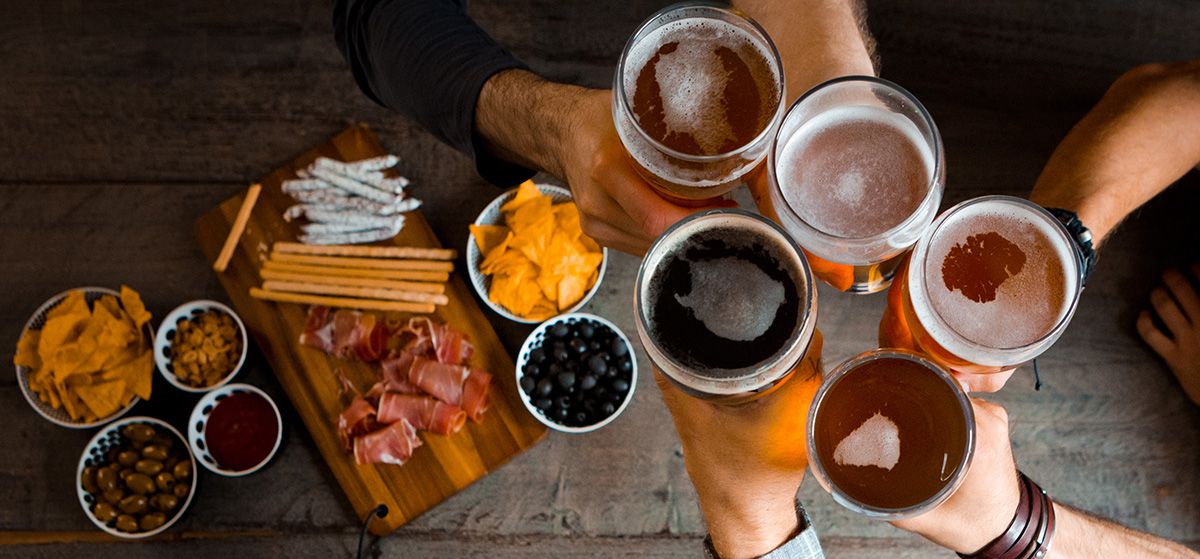
3. Know Your Brand Story
Every business needs to know how to sell its products, but half the battle is figuring out how to sell the brand itself. Not only are you competing with hundreds – and, depending on the product, possibly thousands – of like-minded brewers for shelf space in stores or bars; you’re also selling to a consumer base that can be influenced by the visual design of your products. You’ll need to distinguish your story from everyone else’s – many breweries today cultivate an image reflecting their “passion” for beer. How can you put a unique and personal twist on that?
Maintaining a positive image surrounding your brewery, winery, or distillery is crucial to attracting buyers. This can be achieved via aesthetically appealing packaging, an emotionally compelling brand story, and even a unique value proposition like a beer crafted with an uncommon ingredient or collaboration with another company. Does your brand effectively tell your story and convey a positive message to your audience?
4. Know Your Customers
The most important part of any brewery expansion strategy: Understanding your audience. First and foremost, you need to identify which demographics are most likely to buy your products. Where do they live? How old are they? What are they looking for in a wine, beer, or spirit? What other brands do they currently buy?
Once you figure out what motivates your consumers to buy certain alcoholic beverages, you can begin speaking their language. If you’re trying to introduce locally successful products to a new region, learn about the audience in that area and appeal to their interests. A product that resonates with the locals and sells well in, say, San Diego might not have the same impact in Tennessee.
5. Know Your Strategy
Expanding into new territories is an exciting prospect – but it also needs to be meticulously planned in advance. There are many examples around the industry of alcohol producers attempting to grow too quickly, and being forced to scale back their operations as a result. You need to figure out your distribution strategy in each new area you intend to enter, but you also need to refine your sales pitch so you can hit the ground running once you enter these markets.
Will you sell your beer in bottles, cans, growlers, or some combination of the above? Are you going to approach local markets with individually designed plans? Will you take a more broad regional strategy? Or do you plan to target a national audience and use the same messaging and product placement in every market you enter? Each of these approaches has worked in the past, but you have to commit to the strategy once you determine which route you plan to go.
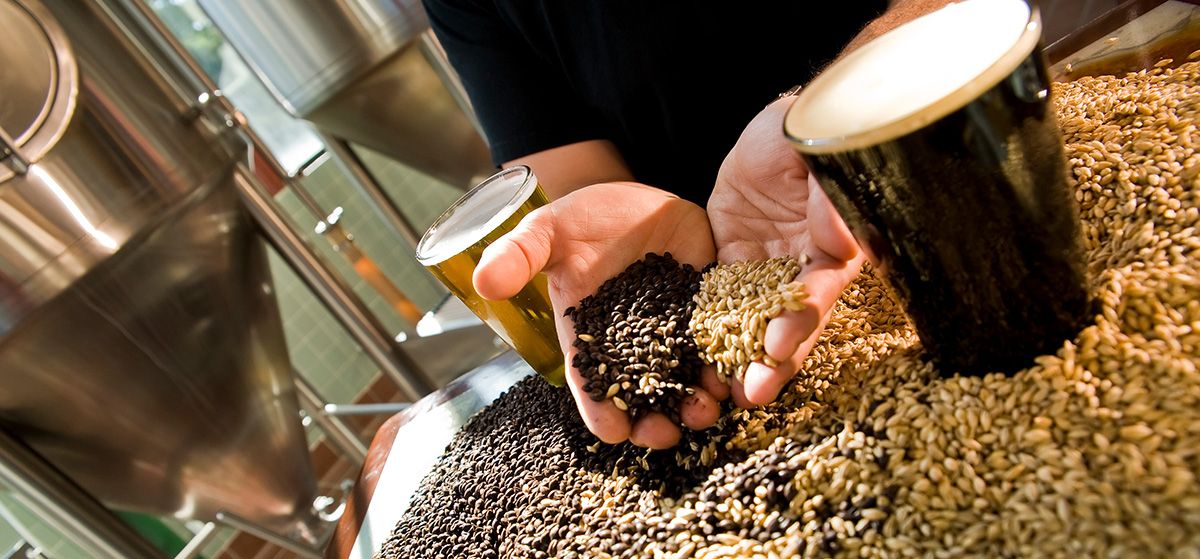
6. Sort Out Your Logistics
Ok, so you have your product strategy in place. Now you need to make sure you can go out and execute on it. This means getting your logistics sorted out, from supply lines to infrastructure. These factors will vary by area and by the ingredients included in your beer you sell, so it’s important to understand the ins and outs of each place and product.
Once you get your supply chain in place, you can start selling beer in new areas and leveraging distributors to help expand your reach.
7. Line Up Distributors
Distributors are in many ways the lifeblood of the bev alc industry, so don’t take your dealings with them lightly. Ensure they will care for your products and be upfront with the them regarding the time and resources you need. Verify that your products fit in with their sales model and establish clear goals that you can use to measure success (and write those down in your contract). Taking the time upfront to check that your distributors are set to meet your needs can save a lot of headache down the road.
So, how can you form a positive business relationship with a distributor?
Good question! First, you have to prove your products are valuable. What do your sales figures look like? Are you producing varieties of drinks that are popular enough to sell in new areas? Once you demonstrate to distributors that your brand has a worthwhile product (or products), you can begin to attract attention. Certain distributors will be a better fit than others based on your expansion strategy, so it’s important to choose one that aligns well with your efforts based on regional infrastructure, shipping capabilities, and localized networks.
Next comes the “fun” part: Negotiation. You can easily be trapped in a bad deal if you aren’t careful and sign a formulaic contract. If a states has franchise laws, that can make getting out of a bad deal even harder. Hire a lawyer who will help you draft and clear and enforceable contract. A legal advisor experienced with beverage alcohol can negotiate on your behalf to strike the best possible deal and avoid future problems.
Another key component is establishing good partner relationships. If your brand managers, ambassadors, and solicitors (or anyone else representing you) develop a positive rapport with your partners, they may be more likely to help promote your brand.
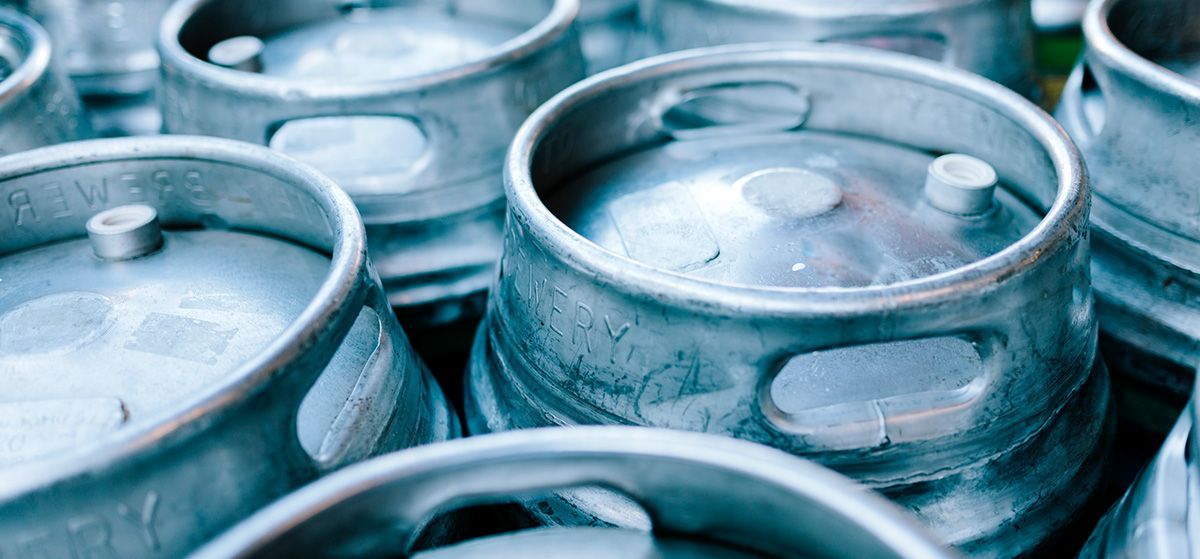
8. Get Your Brewery Compliant
Your brewery is very close to being ready to enter new markets now! This means it’s time to obtain all the correct licenses and registrations you need to legally distribute your brews in new regions. Each state has its own unique requirements and you’ll be responsible for knowing when and what you need to do to ensure you register properly and are in compliance. Between excise taxes, shipping reports, licenses, registrations, price posting, Certificates of Label Approval (COLAs), compliance for a brewery can be complex.
If this seems overwhelming, Sovos ShipCompliant can help your business obtain all the necessary licenses and registrations with our Market Ready solution. Learn more about Market Ready.
9. Stay on Top of Compliance
Once you acquire the licenses and registrations you need to operate in new areas, you need to make sure you stay on top of compliance. This means regularly paying taxes and filing shipping reports, but it also means being proactive. Track your data and measure the performance of your brewery periodically – are you meeting goals and expectations? What is and is not working with your compliance processes? Are you in good standing with each state where you have sales?
Getting behind on state filings can put your business at risk of incurring penalties and interest, or even worse: Potentially losing the license to sell your products in states where you are not in compliance. Sovos ShipCompliant’s 3-Tier Reporting solution can help you stay on top of revisions, license renewals, and any other challenges you may have.
10. Rinse and Repeat
You’ve tackled your brewery expansion successfully and have moved your products into new markets. Congratulations! But you aren’t done – now it’s time to measure your successes, learn from any mistakes you’ve made, and get right back to planning for further expansion. This might mean moving into even more new regions, or it could mean expanding your product lines and increasing product diversity.
Are you in a position to introduce new beers or other products to the market? Are you ready to take the next step toward being a nationally recognized brewery? Are you positioning yourself to be acquired by a larger brand, or to make an acquisition to grow your own brand?
Whatever route you choose to take, you have the tools to go out and conquer the world...or, at least the beverage alcohol industry.

See for yourself how Sovos ShipCompliant can help your brewery stay on top of compliance
Request a Demo10 Steps to Grow Your Winery’s Footprint
Introduction
Businesses are constantly looking to evolve and expand, and this is no different in the beverage alcohol space. However, this is a more heavily regulated industry than most others, which makes bringing new products to the marketplace a unique challenge for many wineries.
In addition to a winery's standard logistical issues like market analyses, licensing, and distribution, wine producers also have to cope with a bevy of regulations from the federal government, state governments, and, in some places, even local jurisdictions. Compliance can be tricky for companies in any space, but it is an especially difficult aspect of selling alcoholic products in the U.S. because of the murky regulatory landscape.
But, never fear! Everyone struggles with expanding their footprint, to some extent. These are natural growing pains, and it’s best to embrace them. In that spirit, we’ve put together a guide for wine producers looking to introduce new products to market and widen their distribution networks: 10 Key Steps to Expanding Your Winery’s Footprint. These are by no means in chronological order; every winery’s timeline may differ.
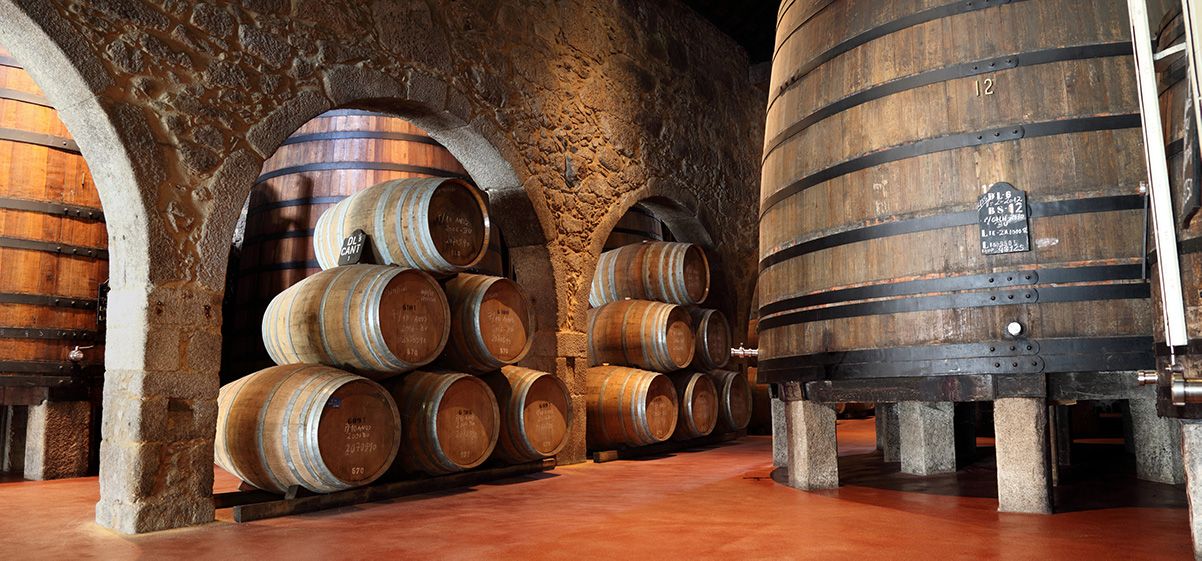
1. Know Your Winery
Before you launch a new product or expand your presence into new areas, it’s imperative to have a complete understanding of your company’s ability to successfully complete the registration process and meet all unique compliance requirements in each area. It’s also important to make sure you don’t overextend yourself at first – focus on a small number of products you think will perform the best, and then expand your offerings from there.
Some questions to ask yourself: What does your internal team look like? Is it equipped to handle an influx of new responsibilities and obligations? Are you prepared to meet each state’s requirements for registration?
The key to successfully entering new regions is to have everything in place before entering a market. Identifying openings in the market is important, but you also have to identify your own capabilities before making moves, and then identify the right time to do so.
2. Know The Market
Speaking of identifying openings in the market, the second thing to consider should be the state of the market. Keep an eye on what’s trending right now, and maintain a close watch on newer products that could possibly explode onto the scene in the coming years. To expand your footprint, you need to have products that both reflect what’s currently popular and also are different enough from everyone else that you can stand out from the crowd.
Are your products diversified enough from what everyone else is offering in a certain area? What are the top-selling varietals of wine? How have your product categories been performing there over the past several years, and what are their projections? Having a 90+ rating or score can help catapult you into the limelight, but if you don’t make the list, don’t fret. Use data to make decisions to improve your performance.
Pay attention to demographics and what’s trending in any new areas you hope to enter. Resources like our annual Direct-to-Consumer Wine Shipping Report can help you stay on top of recent trends and identify the right products to introduce to each new targeted region.
A comprehensive grasp of the markets you intend to enter is critical to the success of your expansion campaign, so you should be sure to follow those markets for quite a while before making a commitment to them.

3. Know Your Brand Story
Every business needs to know how to sell its products, but half the battle is figuring out how to sell the brand itself. Not only are you competing with hundreds – and, depending on the product, possibly thousands – of like-minded alcohol producers for shelf space in stores or bars; you’re also selling to a consumer base that can be influenced by the visual design of your products, varietal, or region in which your wine is produced.
Maintaining a your winery's positive image is crucial to attracting buyers. This can be achieved via aesthetically appealing packaging, an emotionally compelling brand story, or even a unique value proposition like the experience at a wine dinner or your tasting room. Does your brand effectively tell your story and convey a positive message to your audience? Once you have your brand story identified, make sure it goes to the right audience.
4. Know Your Winery's Customers
The most important part of any expansion strategy: Understanding your audience. First and foremost, you need to identify which demographics are most likely to buy your products. Where do they live? How old are they? What are they looking for in a wine, beer, or spirit? What other brands do they currently buy from?
Once you figure out what motivates your consumers to buy certain alcoholic beverages, you can begin speaking their language. If you’re trying to introduce locally successful products to a new region, learn about the audience in that area and appeal to their interests. For example, if Pinot Noir is more popular than usual in your newly targeted market, start by promoting that varietal to gain a foothold.
5. Know Your Winery's Strategy
Expanding into new territories is an exciting prospect – but it also needs to be meticulously planned in advance. There are many examples around the industry of alcohol producers attempting to grow too quickly and being forced to scale back their operations as a result. You need to figure out your distribution strategy in each new area you intend to enter, but you also need to refine your sales pitch so you can hit the ground running once you enter these markets.
Are you going to approach local markets with individually designed plans? Will you take a more broad regional strategy? Or do you plan to target a national audience and use the same messaging and product placement in every market you enter? Each of these approaches has worked in the past, but you have to commit to the strategy once you determine which route you plan to go.

6. Sort Out Your Logistics
Ok, so you have your product strategy in place. Now you need to make sure you can go out and execute on it. This means getting your logistics sorted out, from supply lines to infrastructure. These factors will vary by area and by the types of wines you sell, so it’s important to understand the ins and outs of each place and product.
While you can’t really control how quickly you produce your wine, you can still take proactive steps to make sure everything is in place when you’re ready to begin distributing. Finalize your winery's artwork, bottles, corks, and all the other little things that could cause headaches later down the line.
Once you get your supply chain in place, you can start selling products in new areas and leveraging distributors to help expand your reach.
7. Line Up Distributors
Distributors are in many ways the lifeblood of the bev alc industry, so don’t take your dealings with them lightly. Ensure they will care for your products and be upfront with the them regarding the time and resources you need. Verify that your products fit in with their sales model and establish clear goals that you can use to measure success (and write those down in your contract). Taking the time upfront to check that your distributors are set to meet your needs can save a lot of headache down the road.
So, how can you form a positive business relationship with a distributor?
Good question! First, you have to prove your products are valuable. What do your sales figures look like? Are you producing varieties of drinks that are popular enough to sell in new areas? Once you demonstrate to distributors that your brand has a worthwhile product (or products), you can begin to attract attention. Certain distributors will be a better fit than others based on your expansion strategy, so it’s important to choose one that aligns well with your efforts based on regional infrastructure, shipping capabilities, and localized networks.
Next comes the “fun” part: Negotiation. You can easily be trapped in a bad deal if you aren’t careful and sign a formulaic contract. If a states has franchise laws, that can make getting out of a bad deal even harder. Hire a lawyer who will help you draft and clear and enforceable contract. A legal advisor experienced with beverage alcohol can negotiate on your behalf to strike the best possible deal and avoid future problems.
Another key component is establishing good partner relationships. If your brand managers, ambassadors, and solicitors (or anyone else representing you) develop a positive rapport with your partners, they may be more likely to help promote your brand.
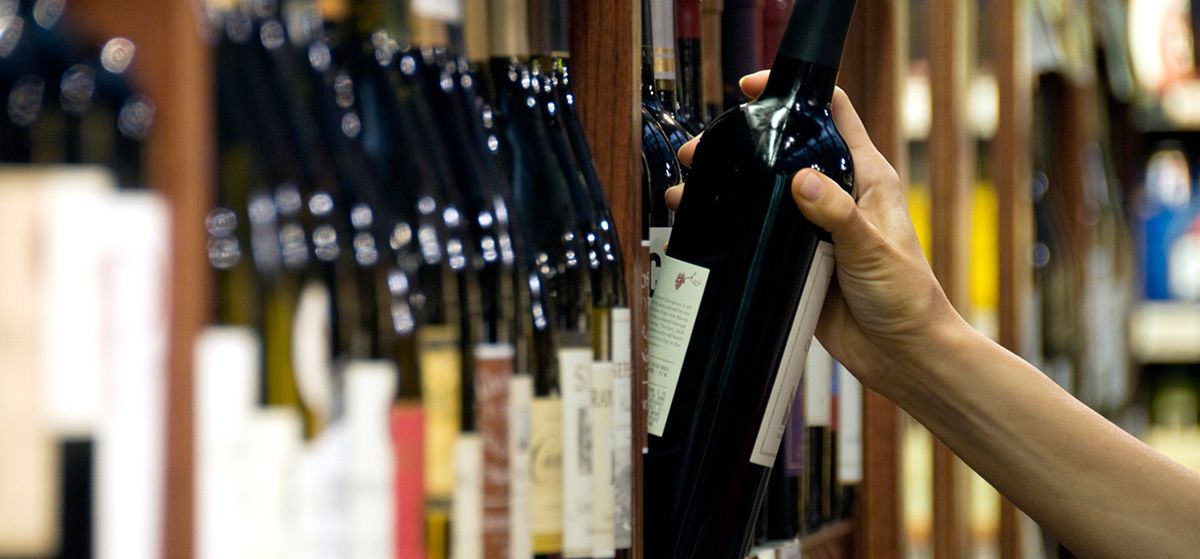
8. Get Compliant
If you have your licenses and registrations in place, it’s time become compliant in every new market you intend to enter. Each state has its own unique requirements – though many are similar – and you’ll be responsible for knowing when and what you need to do to ensure you register properly and are in compliance. Between excise taxes, shipping reports, licenses, registrations, price posting, Certificates of Label Approval (COLAs), your winery's compliance can be complicated and complex.
If this seems overwhelming, Sovos ShipCompliant can help your business obtain all the necessary licenses and registrations with our Market Ready solution. Learn more about Market Ready.
9. Stay on Top of Compliance
Once you acquire the licenses and registrations you need to operate in new areas, you need to make sure you stay on top of compliance. This means regularly paying taxes and filing shipping reports, but it also means being proactive. Track your data and measure your performance periodically – are you meeting goals and expectations? What is and is not working with your compliance processes? Are you in good standing with each state where you have sales?
Getting behind on registrations and taxes can put your business at risk of incurring penalties and interest, or even worse: Potentially losing the license to sell your products in states where you are not in compliance. Sovos ShipCompliant’s 3-Tier Reporting solution can help you stay on top of revisions, license renewals, and any other challenges you may have.
10. Rinse and Repeat
You’ve tackled expansion successfully and have moved your products into new markets. Congratulations! But you aren’t done – now it’s time to measure your successes, learn from any mistakes you’ve made, and get right back to planning for further expansion. This might mean moving into even more new regions, or it could mean expanding your product lines and increasing product diversity.
Are you in a position to introduce new wines or even take on new product types to the market? Are you ready to take the next step toward being a nationally recognized producer? Are you positioning yourself to be acquired by a larger brand, or to make an acquisition to grow your own brand?
Whatever route you choose to take, you have the tools to go out and conquer the world...or, at least the beverage alcohol industry.

See for yourself how Sovos ShipCompliant can help your winery stay on top of compliance
Request a Demo